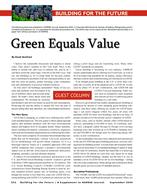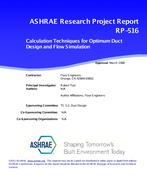In a study of energy consumption in residential housing conducted since 1972 in a Planned Unit Development at Twin Rivers, New Jersey, two approaches to energy data collection and analysis have been taken. In one approach, information available from utility records is used; energy consumption is correlated with house size, house design and outside temperature, and energy conservation resulting from the oil crisis, price increases and retrofits is determined. The second approach uses far more detailed data gathered through the deployment of instrument packages in 29 houses. Internal temperatures, appliance usage and furnace operation are measured, as well as occupant-induced events such as window and door opening times and thermostat settings. Infrared scanning, air infiltration monitoring, wind tunnel testing and detailed experiments in a rented townhouse have complemented the recorded data.
Using both approaches has resulted in an improved modeling of energy related features of typical townhouses and occupant activities and has provided the basis for a retrofit experiment which has achieved 25% gas savings plus 10% electrical savings and has predicted a capital improvement payback period of approximately three years when both heating and coo1ing.seasons are considered, and water heating is included. Additional benefits through a second round of retrofits emphasizing improved operation of the heating equipment look promising for the future.
Product Details
- Published:
- 1977
- Number of Pages:
- 20
- File Size:
- 1 file , 1.5 MB
- Product Code(s):
- D-CH-77-04-2
- Note:
- This product is unavailable in Russia, Belarus


